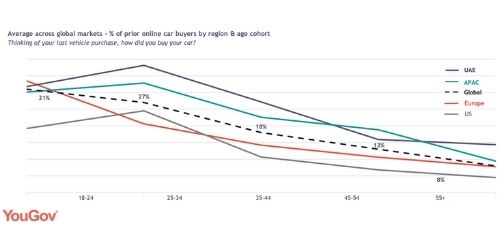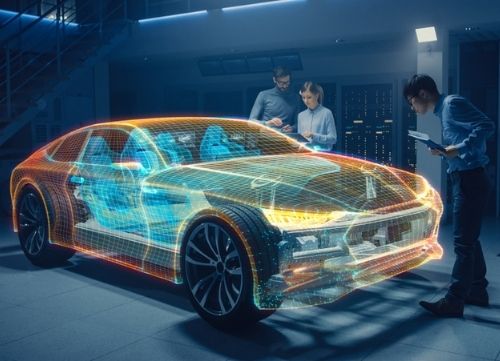
Ever since the introduction of smartphones, the retail landscape has been creeping towards omnichannel experiences, where brands offer a unified service experience through each of their physical and digital touchpoints.
From storefronts to social media and customer service calls to mobile apps, the modern consumer, by and large, now expects to interact and even make purchasing decisions on their terms, in their own time, from wherever they feel like.
The result is a now-popular customer journey that can, for example:
Curiously, however, that behaviour has yet to translate to vehicle purchasing behaviour on a mainstream level. So before we can look at how omnichannel is the future of buying vehicles, we first need to understand how far we are from that future – starting by answering the obvious question:
A new car is one of the most expensive purchases most people will make in their lifetime. Understandably, then, there can be some reluctance to approach it in the same way as buying a piece of mid-expense consumer equipment, like a new smartphone, bicycle or washing machine.
That perhaps goes some way to explain why car companies currently lag so far behind the retail trend. Current car purchase behaviour shows “an industry slow to evolve,” according to the 2021 YouGov International Automotive Report, which found that 84% of respondents still make their car purchases in person. With that in mind, it’s fair to say that the majority of people don’t yet trust buying a car online. But should they?

Image credit: YouGov International Automotive Report 2021
According to the YouGov survey, the top two factors behind the choice of car purchase journeys are price (influencing 59% of respondents) and test driving the vehicle (influencing 51%). Obviously, the latter is something inherent to in-person purchases, while the former suggests buyers put faith in their own bargaining skills. It’s little wonder, then, that buying in-person is still the preferred option.
However, the third most popular answer in the survey involved vehicle customisation (influencing 31% of decisions), where buying online from a dealer was the clear winner. Other answers that favoured the digital route included shopping around from home (24%) and having the car delivered to their door (12%) – again, features offered with increasing success by the online buying model. Buying online also allowed people to avoid the thing they said they enjoyed the least; bargaining with an over-eager sales representative (which 10% said they’d go out of their way to avoid).
Suddenly, that initial 84% of in-person purchases we mentioned above begins to look misleading. Even more so when you dig into the attitudes of different demographics involved in the survey.
Looking at past purchasing behaviour is the first sign that buying vehicles online is due for a significant increase in the years ahead. The International Automotive Report found that globally, 27% of Millennials and almost a third (31%) of Gen-Z respondents had bought a car or other motorised vehicle through digital channels.
More encouragingly still are the numbers for Europe, where 33% of 18-24 year-olds have purchased online. By contrast, the figure hovers around 10% in Europe for people aged 55 and over.
Added to that are the figures the YouGov survey gives for future considerations. All told globally, almost 30% of prospective car buyers said they’d consider making an online dealership purchase – a growth of nearly three times the current digital purchase numbers. The most significant jump was in the 35-54 age bracket, but surprisingly even those aged 55 and over jumped by 15 points to considering an online purchase.
In short, the future of vehicle buying with omnichannel looks bright. Particularly for the younger generation, which will only grow as more and more young people reach driving age. However, a discernible demand is also there from people of all ages, right across the motoring community.
An Omni-channel approach is definitely wanted, then. Vehicle brands and retailers just need to land on a satisfying and trustworthy way to deliver it en masse.

Understanding what that purchase journey may look like takes some guesswork, but expert digital trend forecasters McKinsey offer some fascinating insight. In its feature ‘Car Buying in 2030,’ it predicts “a car purchasing process that is personalised and fun,” consisting of:
Many of these features are currently being trialled and tested by forward-thinking mobility companies. So if you see more and more blogs about “how omnichannel is changing buying vehicles” appearing online within the decade – remember you read about it here first!
Do you already favour convenience over long-tail ownership and you don’t want to wait for the industry at large to catch up to your tastes? We have a great alternative to the traditional vehicle purchase journey that might be right up your street.
At SG Fleet, we offer three different ways to lease a brand new vehicle through your employee benefits scheme: Novalease, Personal Contract Hire, and Car Salary Exchange.
To learn more about each option, check out our blog on the benefits of employee vehicle leasing. Or, for direct advice about which one might best suit you and your situation, call 0844 854 5100 or email CSalmon@sgfleet.com.